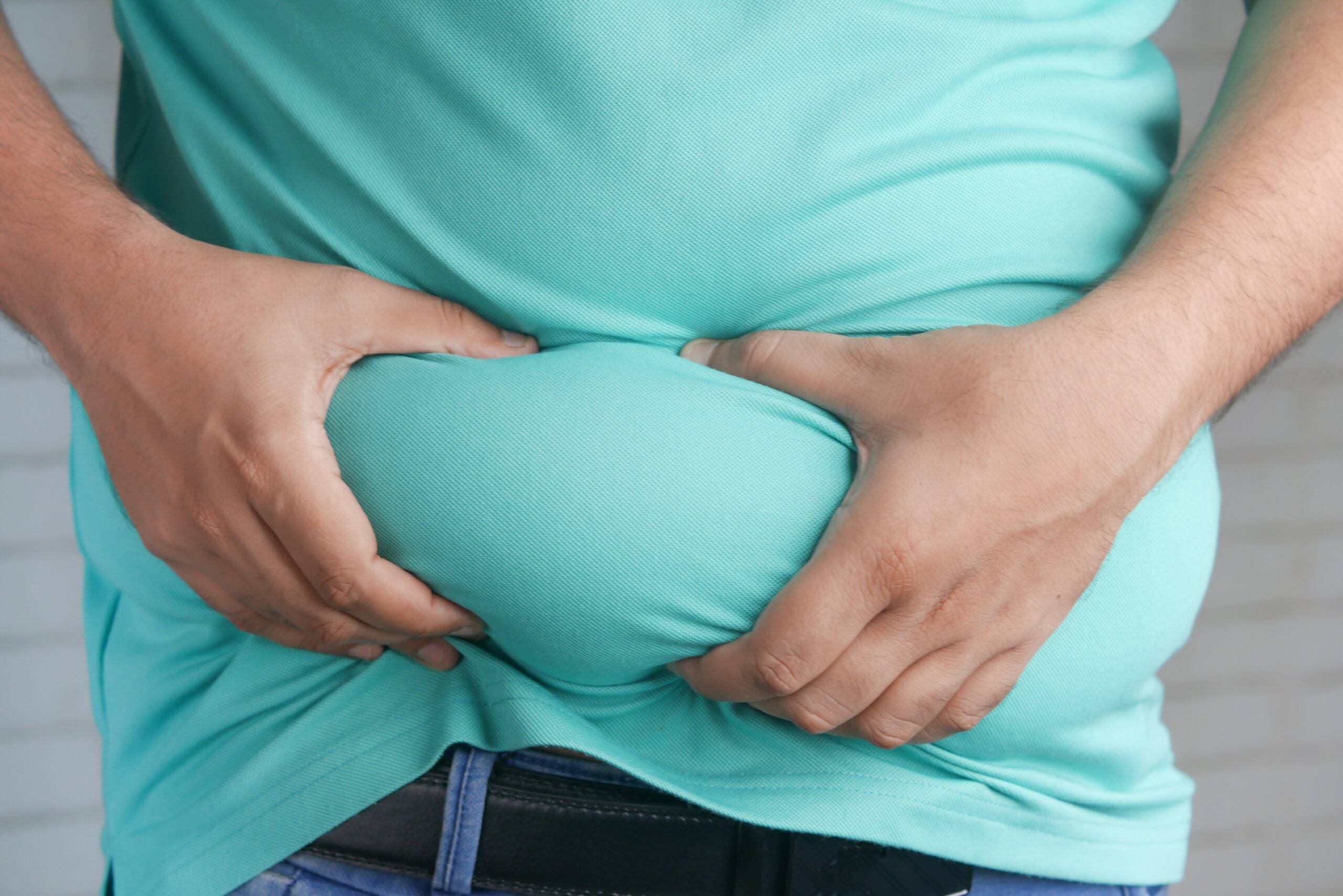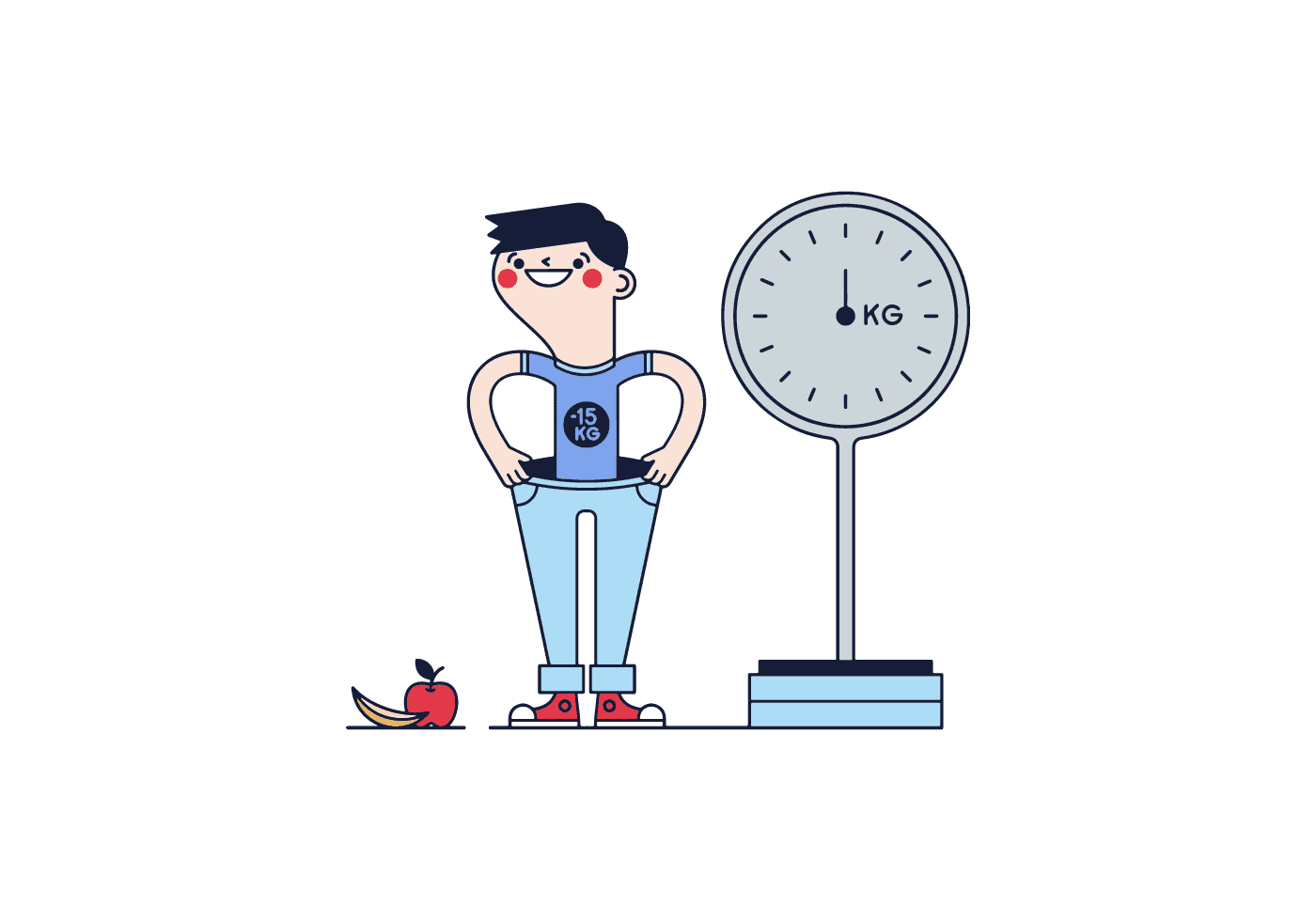Building well-defined six-pack abs require dedication, hard work, and most importantly, consistency.
For noticeable abs, you need to get lean to a point where you can see it. Women see their abs at around 15% body fat while men between 9-11%, depending on their genetics.
In this guide, I’ll break down each phase & give you the exact blueprint to get them easy, fast & safely.
When trying to get abs, the first question that comes to mind is –
How long does it take to get abs?
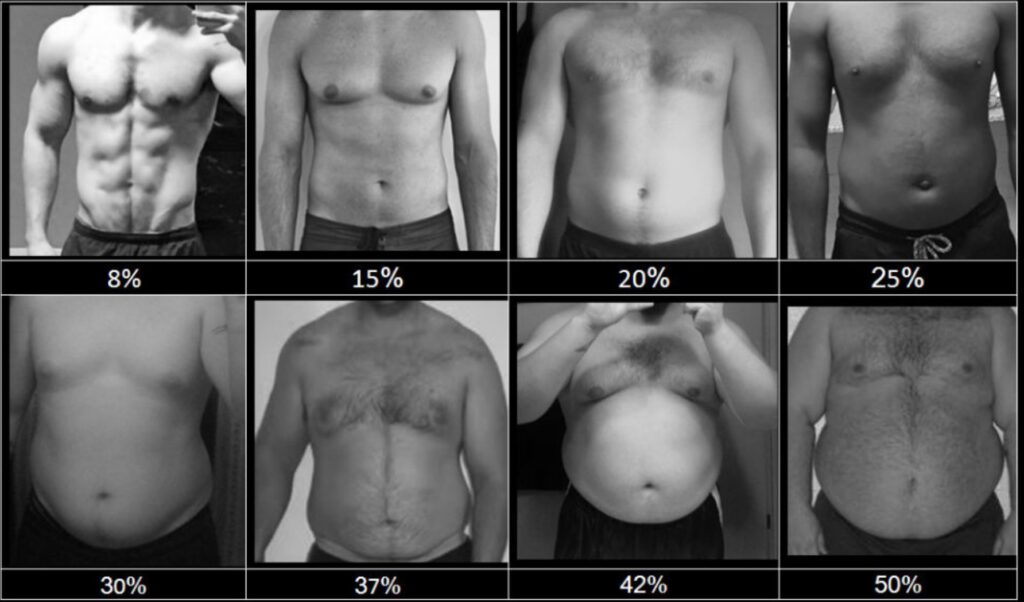
The time it will take you to get six-pack abs depends on your current body fat levels.
If you’re at 12 percent body fat, you may get abs in less than four weeks ( If your nutrition is on point ). It may take you more than 12 weeks if you’re around 25% body fat.
Your diet and lifestyle is the real factor that contributes to the time it takes to build abs.
To measure your current body fat levels, you can use this online calculator. The results may not be much accurate, but you will get an estimate of your body fat.
For accurate results, a skin-fold test is performed using a tool called calipers to pinch different areas of your body and measure fat.
No matter which point you’re at right now, this guide will help you get lean to see those abs. So, let’s jump into each phase one by one.
Phase 1, Week 1 to Week 6
The first thing you must know is – to get lean or to lose weight, you need to be in a calorie deficit – that is – eating fewer calories than you burn each day or burning more calories than you eat in a day.
To get an estimate of the calories needed to burn fat, use this calorie calculator. Get your maintenance calories and subtract 300 from them, and you will get the number of calories you have to eat for the first four weeks.
The most common mistake beginners make is to cut as much as 1200 calories at the start of a program, which results in slower metabolism & plateau later in the diet.
If you have more fat to lose, you can start with 500 – 700 calories initially and then drop the calories as required further.
Nutrition
Nutrition has a contribution of more than 80% in achieving six-pack abs. Protein, Carbohydrates, and Lipids ( Fats ) are the three macronutrients that need to be in a ratio to achieve abs.
Here are a few things you need to do.


Increase your protein intake
Increasing your intake of high-protein foods promote fat loss, increase metabolism, supports muscle growth, and fight hunger on a calorie deficit diet.
High protein diets also minimize muscle loss during weight loss, and help repair and rebuild muscle tissues after an intense workout session.
To get lean while maintaining your muscle mass, aim for 1.2 – 1.5g of protein per pound of bodyweight. Your protein will stay the same throughout the diet.
Protein foods you can include in your diet 👇
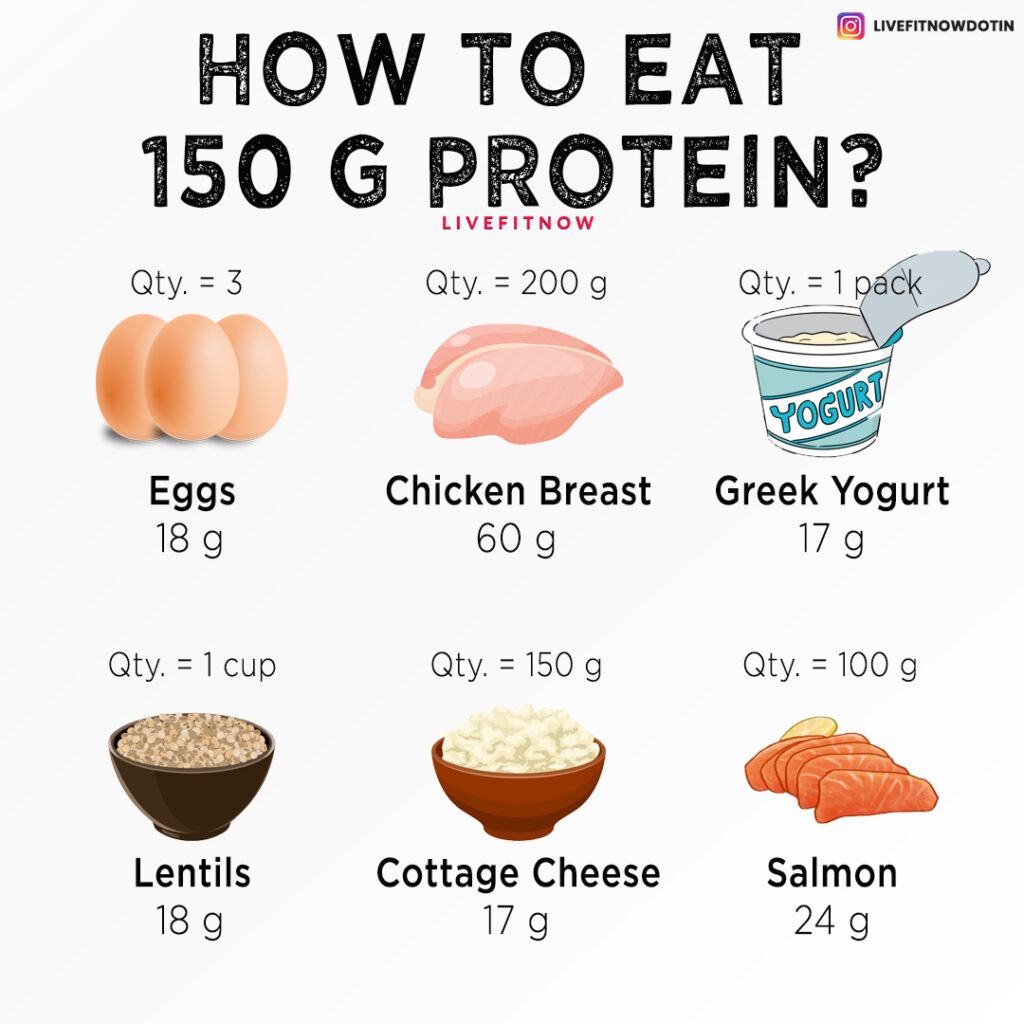
You don’t have to avoid the carbs
Carbohydrate is a vital macronutrient and the body’s primary source of energy. Some people recommend cutting it down to 0-10% ( like KETO ), which is not required. The key is to find the right carbs and eat them in the right amount.
There are two types of carbs, simple and complex. Simple carbs or sugars digest quickly than complex carbs and provide your body with short-term energy that makes you feel hungry again in a few hours.
On the other hand, complex carbs contain more nutrients, digest much slower and provide long-lasting energy. It makes them a good option for weight loss and controlling hunger.
For weeks 1 – 4, 50% of your total calories should come from carbs, 30 percent from protein, and the rest from fats. For instance, if you’re on a 2000 calorie diet, 1000 calories should come from carbs.
Here are some healthy carbs option you can include in your diet 👇
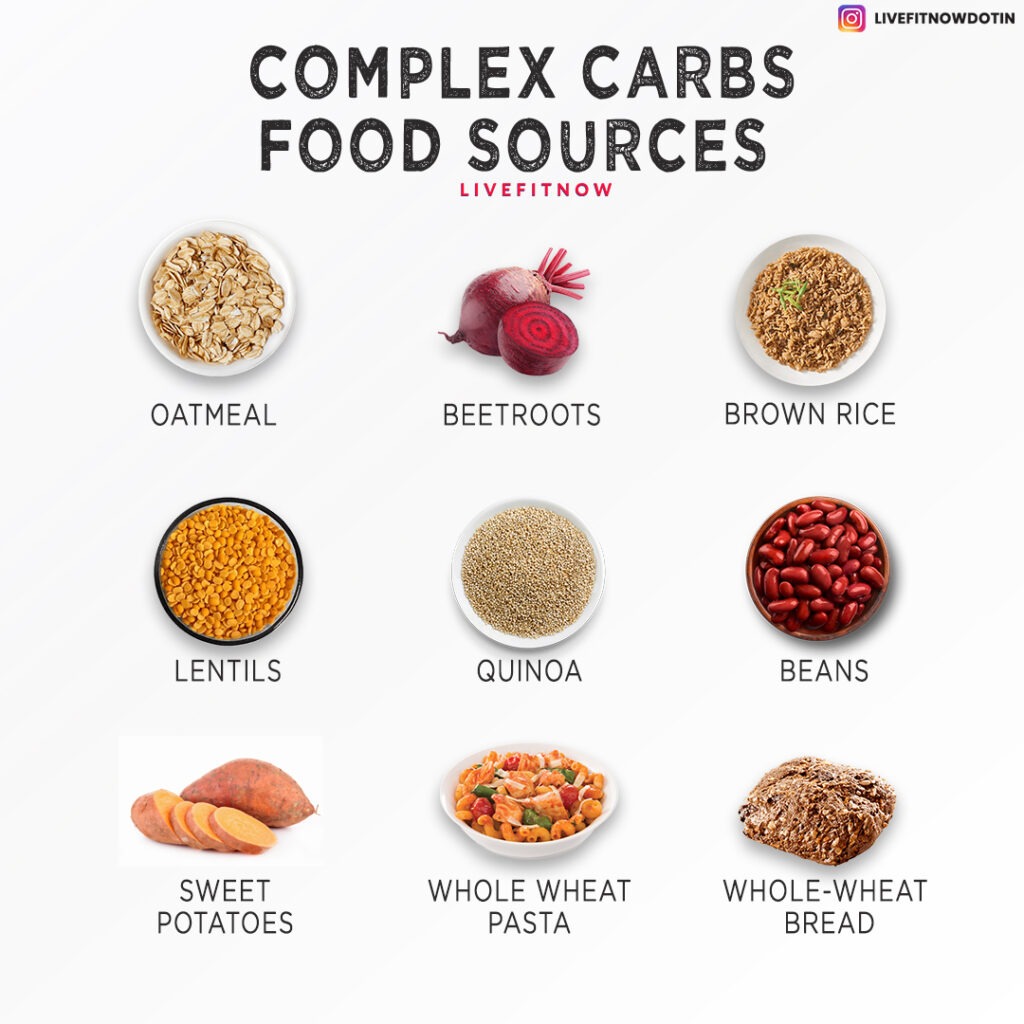
Fat doesn’t makes you fat
There’s a misconception that fat makes you fat. Fat doesn’t make you fat, eating more calories does.
Fat is an energy-dense nutrient – which means it has double calories as carbs and protein. Therefore, it is easy to consume more calories from fat without realizing it.
It’s an essential part of a balanced, healthy diet. It helps the body in absorption of vitamins A, D, and E. These are fat-soluble vitamins that mean they can only be absorbed with the help of fats.
Your diet should consist of at least 10 – 20% of fat. For instance, if you’re on a 2000 calorie diet, 400 calories should come from fats.
You can eat up to 3 egg yolks per day for fat. Don’t fear them. They’re incredibly healthy, nutritious, and filling. Other food sources of healthy fats are flaxseeds, walnuts, almonds, fatty fish, salmon, etc.
To read more about the type, good fats & bad fats, see this article.
Stick to foods you can eat daily
Don’t look for too much variety in your diet. Create a list of foods you can eat daily and stick to it. For example – eggs, chicken, beef, tofu, for protein. Oats, brown rice, and whole-grain bread for carbs, salmon, tuna, flax-oil, and whole-eggs for fats.
Find the foods you can cook yourself. That will help you measure food intake and be consistent with your diet.
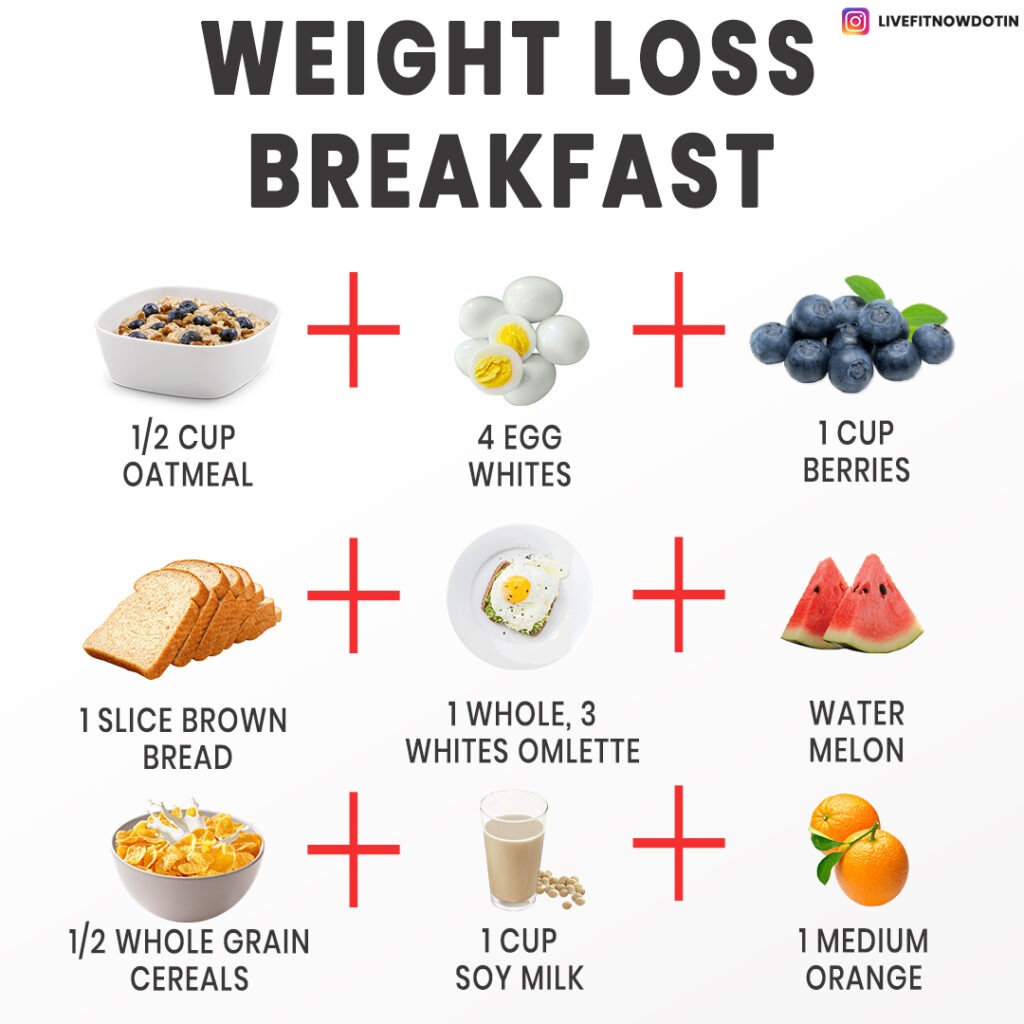
Track how much you’re eating
Weighing your food helps reach your fat loss goal faster because it allows you to access your calorie intake and make changes if required.
Many people think that weighing your food is a waste of time. But what they don’t consider is that sizing up portions just by wondering can be off sometimes by more than 100 calories.
You may have also heard that three ounces of meat are the size of your palm. But we all don’t have the same hand size. Right?
So, it could weigh 3 ounces on my hands and six on someone else, delivering an extra 155 calories.
And those calories can add up day after day, enough to slow down – or stall – weight loss.
It doesn’t take much time to weigh your food and track. Weigh your food and add it into MyFitnessPal to track its nutrition info.
Or, you can use NOOM for free to track your meals, creating smart meals with the help of AI and other helpful features to make the process more simple.
Workout
To achieve abs fast, being physically active is as important as eating a nutritious diet. But that doesn’t mean you have to hit the gym 7 times a week. Working out 3 times a week can work wonders.
Add some compound exercises to your workouts, such as the deadlift, squats, and rows to hit multiple muscles at once. These exercises help build strength, maintain muscle mass, and burn more calories during weight loss.
Watch your from
The main reason most people struggle with building muscle is their lack of form. Everyone is trying to be a DO IT YOURSELF type. I saw people in the gym doing wrong workouts but are stubborn to ask the right way.
If you feel you are doing wrong, always ask the trainer or someone experienced.
Don’t just lift the weight from position A to position B. Always focus on the contractions, concentric, and eccentric phases of the exercise.
Proper form also minimizes the chances of muscle injury and impairment. Download the sample workout plan PDF for Week 1-4 with instructions on how to perform each exercise correctly.
You can also follow some other workout plan or create your own, just keep your focus on building strength. It’ll help you hold on to that muscle mass while cutting.
Skip the cardio for phase 1
You can do cardio if you want. But adding it in the last few weeks is more effective and gives a nice tweak to your body.
When you start a calorie deficit diet, you lose fat just by doing it. Engaging in more cardio can put you in a large deficit which results in muscle loss & slow metabolism.
Before we step into the next phase, one common question many people ask me is –
How to get abs at home?
The first thing you need to understand is hitting the gym is not necessary to build abs, calorie deficit is. You can definitely build six-pack abs at home if you are following a calorie deficit diet.
Follow the exact nutrition plan mentioned above, along with these tips to be active at home and burn more calories.
- Walk 20 minutes empty stomach every day
- Buy yourself an Air Bike for cardio at home.
- Walk 20 minutes before going to bed.
- Try these home workouts for fat loss empty stomach.
congrats you have just completed the first phase. It’s time to move to the second phase to make things a bit more interested.
Phase2, Week 7 to Week 14
Welcome to phase 2. So far, we’ve learned about nutrition, workout, calorie intake, tracking & weighing. In this phase, you will learn how to manipulate your diet to make it work for you.
As you lose weight, your maintenance calories also decrease, and so is your overall calorie intake for fat loss.
So, you have to re-access your calories again. To do that, go back to the calorie calculator again, enter your current weight & get your maintenance calories.
Now subtract 400 from your maintenance calories, and you will get the number of calories you have to eat in phase 2.
Never let your calories go down below 1000 – 1200. That’s the worst thing you would do. Large deficits slow metabolism and put your body in plateau.
Cycle your carbs
In phase2, You have to follow a dieting method called carb cycling, which will help boost your metabolism & fat burning.
Carb cycling is a dietary approach commonly used to lose fat, maintain physical performance while dieting, or overcome a weight loss plateau.
In this phase, we will be utilizing a High, Medium, and Low carb day strategy. So, what you have to do is –
- Follow the medium carb diet four days straight
- High carb diet one day after the four medium days
- And the low carb diet two days in a row after one high carb day.
For example – Mon, Tue, Wed, Thu are Medium days. Friday is a high carb day, and Saturday, Sunday is low carb day.
On Medium carb days, eat 30% of your total calories from carbs and the rest from protein and fats. On High carb days, eat 60% of your calories from carbs, and On low carb days, eat 10% of your calories from carbs.
For Instance – if your total daily caloric needs are 2000, you would eat 600 calories – 150g carbs on medium days. 1200 calories – 300g carbs on high-carb days, and 150-200 calories – 50g or fewer carbs on low-carb days.
One mistake people often make on low-carb days is they don’t increase their fat & protein intake. On low-carb days, you have to increase your fat and protein intake to hit your daily calorie goal.
Phase 2, Workout
If you’re working out at home, you can follow the exact home workouts I mentioned in phase1. Just increase the duration of each session by 10 minutes or more.
For people working out in the gym, download the pdf of the phase2 workout plan. Also, It is not necessary to follow this same workout. You can create your workout plan, choose your exercises if you want.
As I said before, focus on maintaining your strength. Don’t use light weights with high reps approach that can reduce your overall strength & muscle mass.
Add cardio
At this point, you need to add some cardio to burn some more calories.
Perform 30 – 40 minutes fasted-cardio every morning. You can also do a HIIT workout for 15 minutes, 3 times/week, instead of slow pace cardio.
Here are some different methods of cardio and the number of calories you can burn in 30 minutes:
- hiking: 185 calories
- dancing: 165 calories
- walking (3.5 mph): 140 calories
- running (5 mph): 295 calories
- bicycling (>10 mph): 295 calories
- swimming: 255 calories
What to do if you hit a weight loss plateau?
Weight loss plateau happens when your weight stays the same despite following a calorie deficit and exercise plan.
When you follow a diet for some time, your body starts to adapt, slowing down your metabolism to conserve energy and making it difficult to lose weight further.
Many studies indicate that the weight loss plateau happens after six months of following a low-calorie diet. But you may hit it in one month or two months into dieting. It depends on many factors include:
- the body adapts to weight loss and defends itself against further weight loss
- people stop following their diets after a few months
- the metabolism slows down if a person loses weight quickly
Follow reverse dieting
Sometimes, having a cheat meal once per week helps you get out of a plateau. But if that doesn’t work for you, you may need to do reverse dieting.
Reverse dieting is a method of eating slightly above your maintenance calories to get your body out of the dieting environment and revive your metabolism.
If you’re weight loss slow down in phase 2 or stall. Start eating 100-150 calories more than your current maintenance calories.
When to stop reverse dieting?
A reverse diet can take anywhere from a few weeks to months to get you out of a plateau and help you increase your metabolism.
Some signs you may want to continue with your reverse diet include:
- You haven’t gained much fat, or you don’t mind the amount you’ve gained.
- You still feel interested in eating more than you are currently.
- You’ve been reverse dieting for less time than you were in a calorie deficit.
Signs it may be time to stop your reverse diet include:
- You’ve gained as much fat as you feel comfortable gaining.
- You don’t feel interested in eating even more.
- You’ve been reverse dieting for longer than you were in a calorie deficit.
What after reverse diet?
Once you successfully reverse the diet, you can start the calorie deficit again to reach your desired fat loss goal by following the same method.
The Bottom Line
Regardless of your gender, weight, and body fat percentage, this guide will help you get lean to a point where you can see your six-pack abs.
The time it will take to get you there depends on your current body fat level, lifestyle, and nutrition. Increasing your physical activity, eating healthy nutritious foods, and keeping track of your intake can help you get there fast.
There are so many helpful diet ideas and recipes available on the internet to help you get started.
I know you can do it! Eating healthy is much easier than you think. Permanent lifestyle habits can help you maintain those abs for a long-long time.





